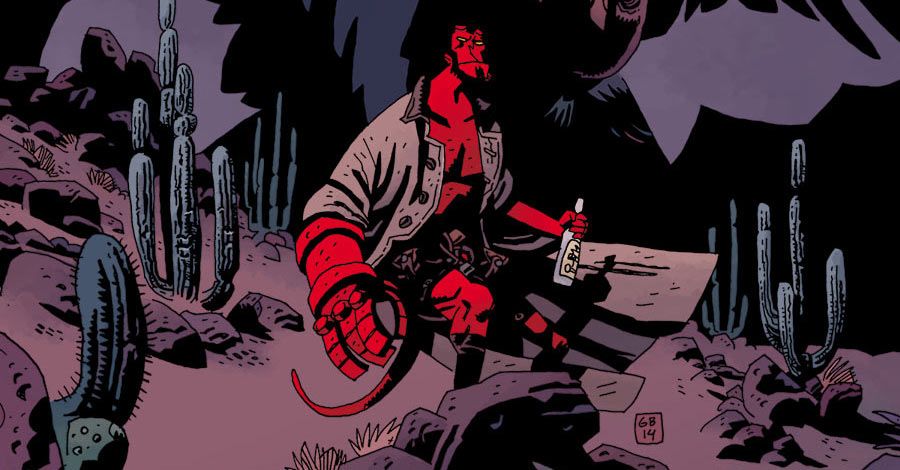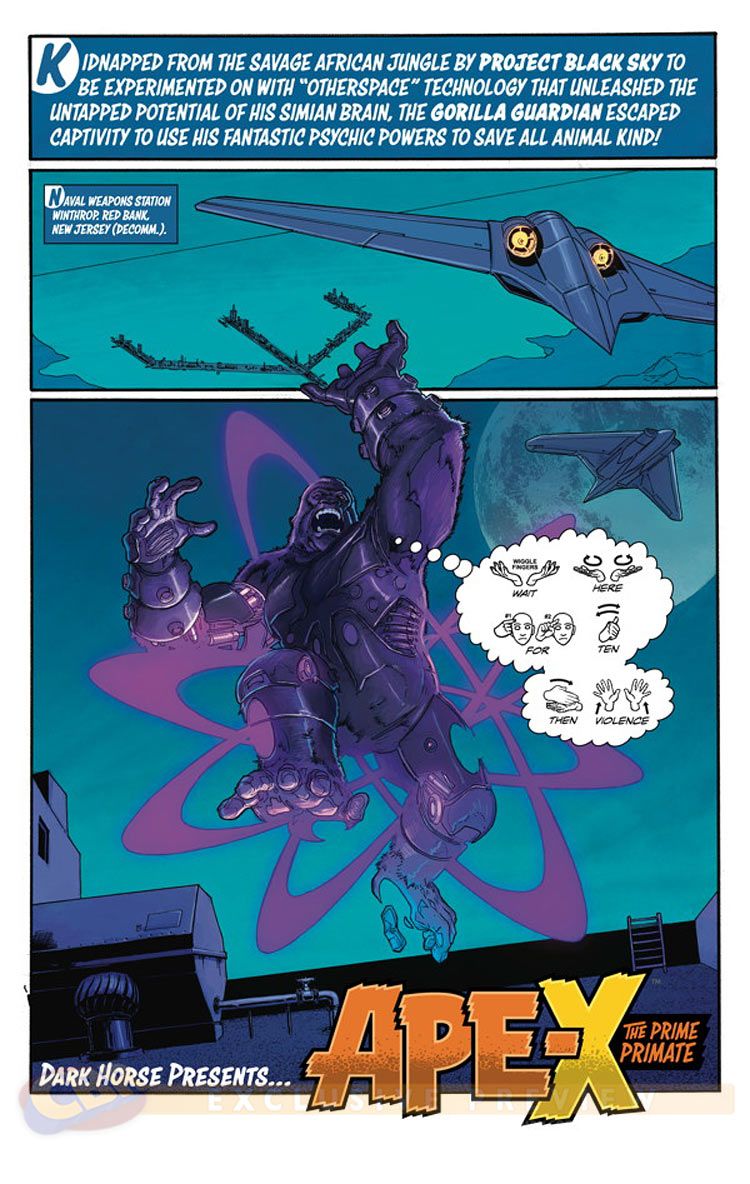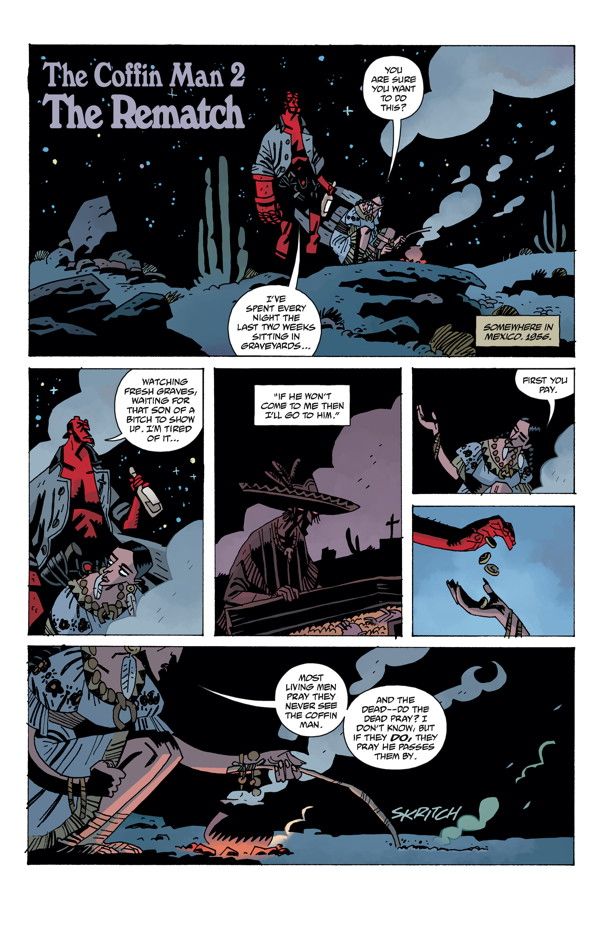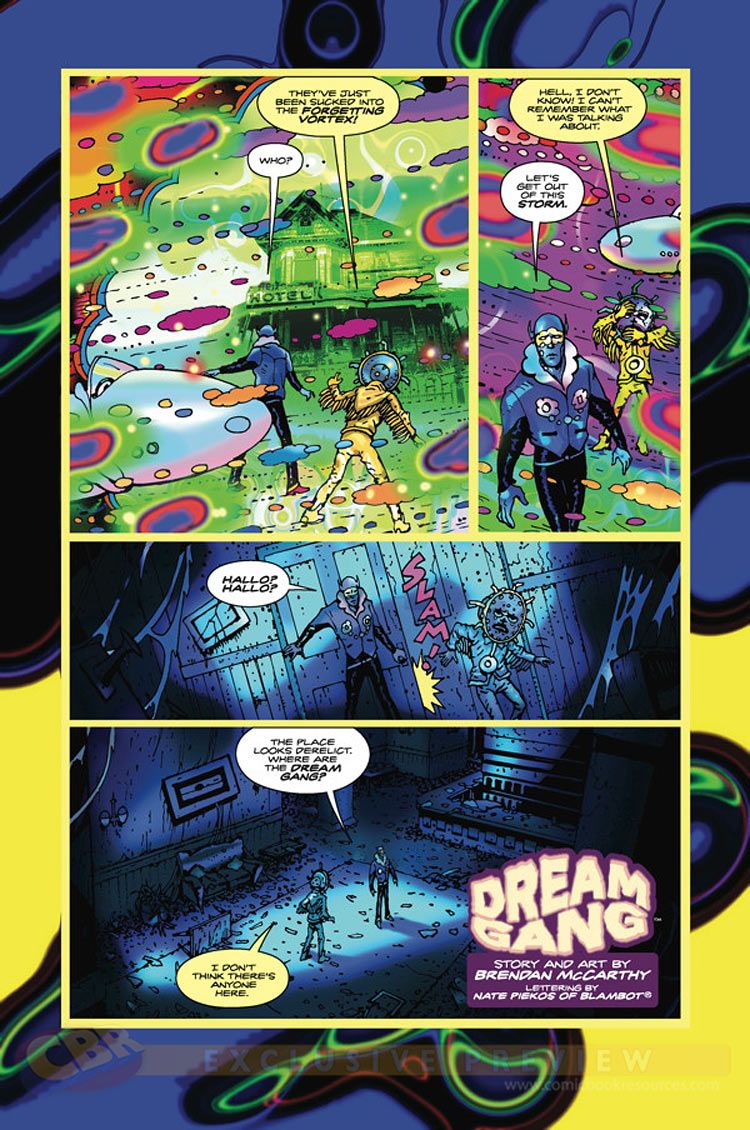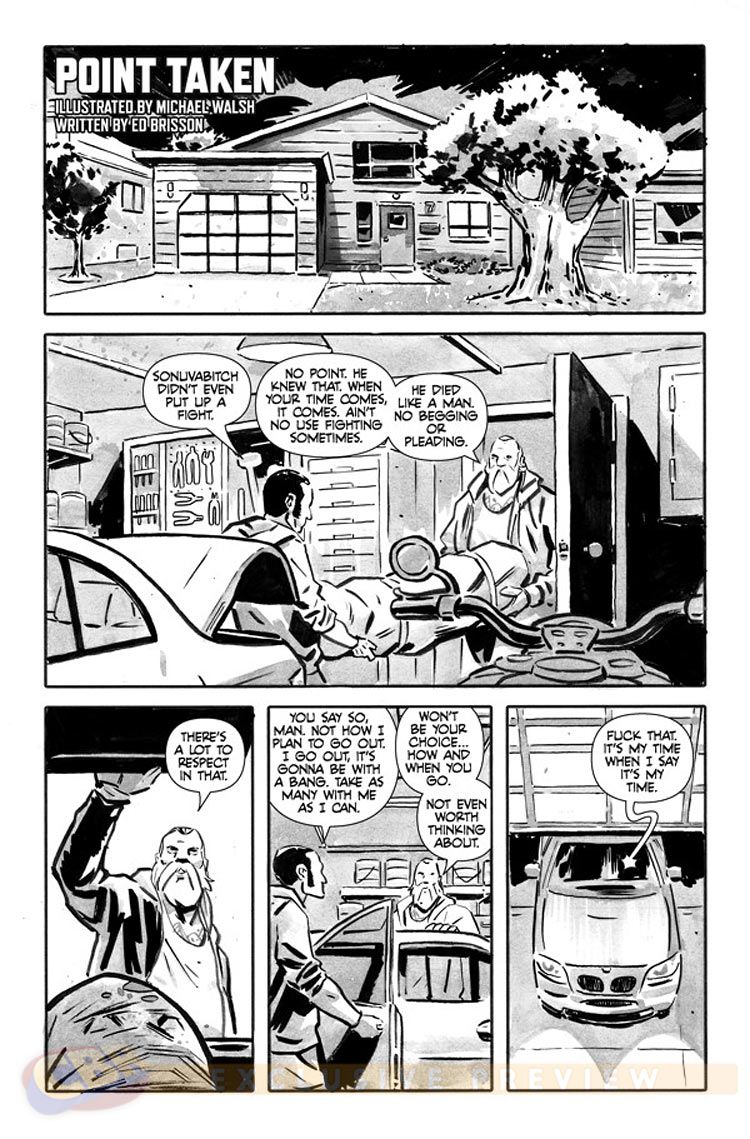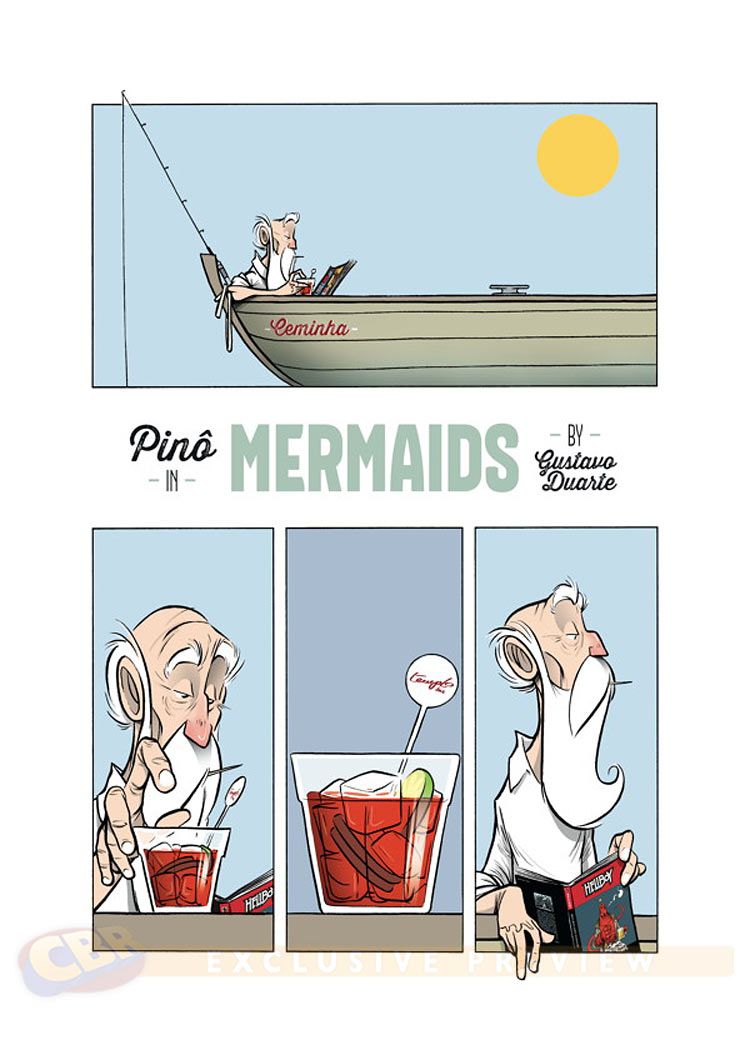From the start, "Dark Horse Presents" has been one of the cornerstones of Dark Horse Comics' publishing plans. The renowned anthology series was the very first comic released by the fledgling publisher in 1986, and since then it has remained the go-to place to try out fresh concepts, new characters and up and coming creators. "Sin City," "Concrete" are "Next Men" just a few of the critically acclaimed and fan favorite comics got their start as short stories in the pages of "DHP," each one very quickly graduating to their own standalone series or, in many cases, multiple series.
While the series has seen some considerable breaks in its schedule over the decades along with format shifts -- the series ended in 2000, before returning as a digital series as part of MySpace Comics from 2007-2010, then returning to print in 2011 -- the multiple Eisner Award-winning title remains an important component of Dark Horse's publishing line.
Now in its fourth incarnation, and nearing its 200th issue overall -- which lands in stores Feb. 18 -- Dark Horse shared with CBR memories from several of the anthology's key players, who have related their favorite "DHP"-related moments from the comic's near three-decade run. Additionally, Dark Horse provided an exclusive look inside the covers of the landmark issue #200, including work from Mike Mignola, Brendan McCarthy, Ed Brisson and more.
Mike Richardson, President and Publisher: "Dark Horse Presents" was the first comic book that we ever produced. Randy Stradley and I pasted it up and put it together on the counter of my Beaverton, Oregon, comic shop. We used a local printer and hoped to sell ten-thousand copies in order to break even, which we considered a long shot. We ended up with sales of more than fifty-thousand, and a second printing later on. Right off the bat, we were successful, and Dark Horse Comics was officially born. We had a book that came out right after called "Boris the Bear," and it actually surpassed "Dark Horse Presents" in sales. We were immediately in business and cash positive. It was an exciting time.
Harlan Ellison had a radio program in Los Angeles at the time and began saying great things about "Dark Horse Presents" -- particularly "Concrete," which appeared in the early issues. I called Harlan a couple of times, and he was very polite and encouraging on the phone. He's a dear friend now, but I had never met him in person in those days. During that time, we traveled to our first WonderCon in Oakland, and Harlan was there signing autographs. I thought we should walk over and say hello. As I said, we had talked by phone but had never met in person, so he didn't know what we looked like. I grabbed a poster being given away and got in line. I finally made it up to Harlan, and he asked me what I'd like him to write. I said, "You're Harlan Ellison; write something brilliant." He barely looked up, wrote "Harlan Ellison," handed the poster back to me, and turned to the next person in line.
I think that what has stuck with me over the years is the excitement so many creators have had about being included in "Dark Horse Presents." We've launched many careers out of our anthology, and many well-known comic characters and projects had their first appearances in those pages. Both the industry and the fans have always embraced the book, and it represents Dark Horse in the best way. The comic has gone through a couple of different incarnations. The original "Dark Horse Presents" was black and white and had three stories, eight pages each. That was it. In retrospect, it seems like such a hard way to present the content you'd like to get into readers' hands. When I brought the title back, it was eighty pages, all story, in color. It was a great way to relaunch and a format I had dreamed about for years. I have loved DC [Comic]'s 80-Page Giant format since I was a kid, but the format I loved as a kid has its problems for me as an editor. For three years, we put out eighty pages of original comics work per month. We're talking about ten different projects with three or four creators per story and crushing deadlines. Needless to say, it's a tough schedule. Now we're offering a forty-eight-page version that takes some of the pressure off. It seemed only right, however, to celebrate our two hundredth issue (nearly thirty years from the date we published that very first issue) by bringing the page count back up to eighty and packing it with some of the finest creators working in comics. And we're not raising the price. Finally, we've included a foldout featuring every cover of every issue from day one.
I look at those two hundred issues and they represent thirty years of my life. My middle daughter was born the same year we launched "Dark Horse Presents," and now she works here. Proof of the old saying, "Time flies when you're having fun." I can say we've had a blast with "Dark Horse Presents."
Randy Stradley, Vice President of Publishing: There were all kinds of things in those early days, things that we would come across -- either people that we wanted to work with that we thought we would never really have a chance to, or people we'd never heard of who were doing great work. There was a story that we had seen published in a local newspaper, done by this Canadian artist Carel Moiseiwitsch, who had drawn it as part of this Remembrance Day function, and it was all about World War I and the horrible trench warfare that went on, and the blind arrogance of the commanding officers and terrible sacrifices of the troops in the trench. It hadn't been seen anywhere, it was in this local paper. So, I contacted Carel and asked if we could run it. It was a really powerful story, but it was something that would have never found its way into comics any other way.
There was a story that Bill Stout had done years ago for an underground comic that was all about the US's involvement in a war in the Philippines, in which a million Philippinos were massacred -- essentially killed -- by US forces. It's a part of US history that's never talked about, and he had done this really powerful story. It was in an underground, around 1979, it had never been seen by a wide audience.
Doing those kinds of stories put us in touch with people that we never would have thought we'd have the ability to say, "Hey, do you want to do a story?" Of course, as time went on, we got Charles Vess doing stories, Frank Miller, John Byrne, lots and lots of people who were big names. When we first started, we never thought we'd have a chance of contacting them.
Scott Allie, Editor-in-Chief: When I started here, I was Bob Schreck's assistant when he was working on "DHP," and the "Hellboy: Wolves of Saint August" was in "DHP," so some of the first issues I worked on were right around then. That was when Barbara Kesel assigned me Hellboy and I became the Hellboy editor and we had those stories in "DHP." "DHP" was just an important part of how I saw Dark Horse.
The first thing I ever wrote for Dark Horse was a short story. Randy Stradley and I were sitting around -- Randy was the editor of "DHP" again after Schreck left. We were talking about stuff we liked and doing theme issues. We kicked around the idea of doing a Lovecraft special. I told him an idea I had for a story, he told me an idea he had, and I said we should get Mignola to do one. Mignola did the cover, and it was this great portrait of Lovecraft. I wrote that 8-pager for Randy, and that was the first thing I'd ever written for Dark Horse. That was probably four years into my time here, and toward the end of that original run of "DHP."
DHP is such a good representation of what Dark Horse is all about. There have been times when there wasn't a DHP at Dark Horse, but I think it's important that it be there, and it is kind of the flagship title. It was the first one.
Chris Warner, Senior Editor: Mike Richardson and Randy Stradley got in touch with me (along with Paul Chadwick, Mark Badger, Mark DeMatteis and Randy Emberlin) with the idea of publishing a creator-owned comic-book anthology. "Black Cross"was something I'd been kicking around in APA-5 (an amateur press association -- sort of stone-age print blogging society--that included Mike, Randy, Paul and myself), but I'd never done anything more than illustrations of the main character. Mike suggested I do a "Black Cross" story for "Dark Horse Presents" #1. I was working for Marvel at the time, but doing my own stuff seemed like it would be a lot more fun -- and it was. I remember how mind-blowing "DHP's" success was right out of the gate, going back to press several times, selling ridiculous numbers for a small-press title (not to mention the first offering from a small publisher). I have to thank Mike for the opportunity; I might never have done anything with"Black Cross"otherwise.
When Dark Horse started up, readers were yearning for new characters and different creative voices. Marvel and DC were grinding out a lot of the same kind of material, and readers and retailers were looking for something fresh. Today, comics shops are flooded with new titles and exciting creators, and I'd like to think "Dark Horse Presents" has had something to do with that evolution. We're in an era where there's a lot more attention paid to unique creative visions, and "DHP" still provides a platform for those visions. And I got to create the first cover and first story for "Dark Horse Presents." There can be only one!
Jim Gibbons, Associate Editor: At a certain point, there was a Neil Gaiman poem called "The Day the Saucers Came," and Paul Chadwick was going to illustrate it for "DHP." It turned into 7 amazing pages of art to go with this fun and beautiful poem. Neil had specified that he wanted someone to use a hand-lettering style on it. The week before that, Clem Robins got in touch with a bunch of us and let us know that his mentor, Gaspar Saladino, who was 90 at the time and had lettered for years -- he's a guy that a lot of modern letterers look up to. He was retired and was looking to do some more work. Clem put me in touch, and I got on the phone with Gaspar, who is just the world's nicest, most pleasant guy. He said, "Sounds like a fun opportunity, send me the pages." A lot of letterers now work digitally, but I had to send him the vellum paper to letter on, which helps demonstrate how much history is involved in working with DHP. That's a type of lettering that most people don't do now, and I, in my career, hadn't had the chance to do.
The only other thing I will say -- because it was such a nervous and terrifying situation for me -- as we were going to print on issue #12, that was around the time that Moebius passed away. Mike [Richardson], having known Moebius, did an intro about him, and in it he mentioned a story about how he had gone out to eat with Moebius to a Chinese restaurant. At a certain point in time, Moebius drew on a chopsticks wrapper a character who looked just like Concrete with horns -- and this was prior to the arc of Concrete where he actually grows horns. Mike tells this story of how crazy it was that Moebius drew this character and had no idea that this story had even been written or was going to print or hadn't been published yet.
Mike said to me after we published it, "I think I still have the chopstick wrapper. I'm going to bring it in." I thought there was no way after all these years that Mike is going to find this chopstick wrapper. I don't think anyone was expecting to see the image. Of course, as we're working on the intro for issue #13, Mike brings in a baseball card sleeve with a chopstick wrapper that has this Moebius illustration, and hands it to me. He says, "Get it scanned, and put it in the book." There I am, holding this incredibly unique bit of art from a legendary artist, but it's also an incredibly personal collectible item, and sentimental item to Mike, and he just hands it off to me very casually. The implication is, obviously, "Don't lose it!"
Thankfully, everyone who handled it, from myself to digital production, did so with a great deal of caution and reverence. In issue #13, we had a great side-by-side of the Paul Chadwick art and this doodle from the chopstick wrapper. When all was said and done, we got it back to Mike, and the chopstick wrapper is now safe.
"Dark Horse Presents" #7, the 200th issue overall, arrives in stores February 18.

